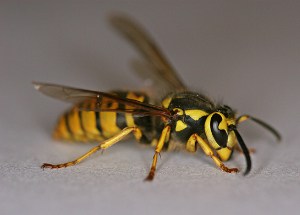Although yellow jackets are very similar to honey bees, and people are used to confusing them, this type of insects is much more aggressive. The most apparent distinction is that the yellow jackets have hair on the abdomen and are much larger.
Even if you are not going to attack these insects, they can consider it another way and bite you. Therefore, it is essential to get rid of yellow jackets immediately as they appear in your yard. In this article, we will examine how to do it fast and without damage to your health or house.

Yellow Jacket Identification
After reading this section, you will know about the yellow jackets’ lifestyle, what attracts them, and the methods on how to get rid of yellow jackets naturally. My professional experience showed that people who found the nest in their yard unexpectedly always lost courage and did not know how to start removing yellow jacket nests. Let’s close this gap!
What Does a Yellow Jacket Look Like?
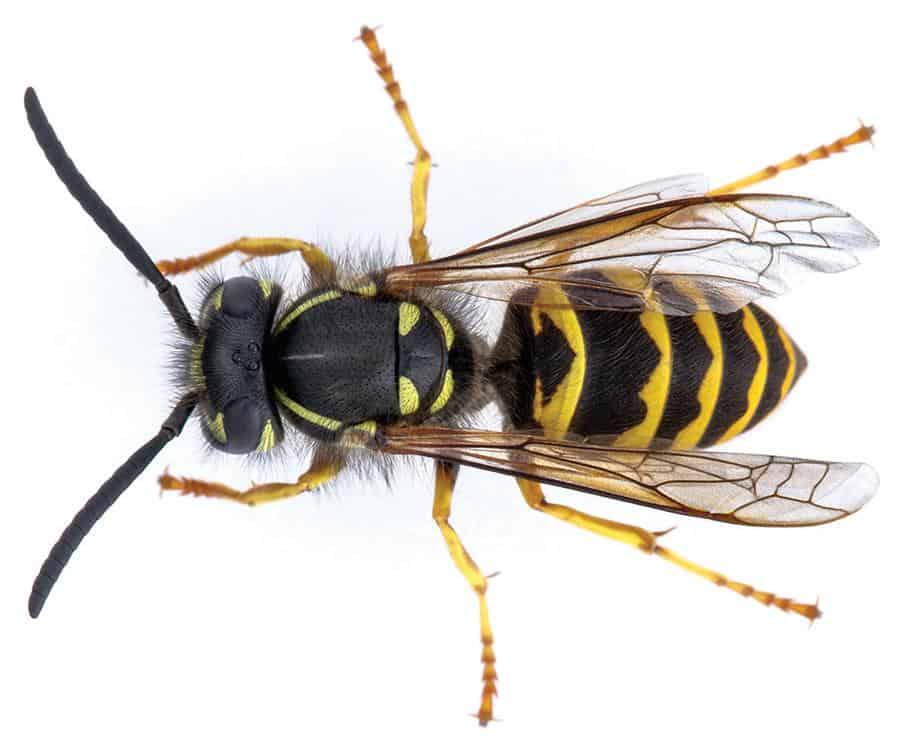
The similarity between honey bees and wasps is obvious. Both of these insects have the striped yellow and black body, fly near the flowers and create nests.
However, yellow jackets are much bigger, about half an inch in length. It is the body size of a typical worker, and a yellow jacket queen is significantly bigger — from three to four inches. Due to its colorful and bright abdomen, it is effortless to notice these insects.
If you can’t detect whether it is a honey bee or the yellow jacket by the size, look at the abdomen: if there is dense hair, then it is a honey bee. Overall, the insects have a thin and slightly elongated body with small wings. When flying, they emit a slight buzz that is hard to miss.
In front, the wasps have small antennae, which are their organs of smell. Yellowjackets have three pairs of paws; the front ones are shorter than the other two.
Where Do Yellow Jackets Nest?
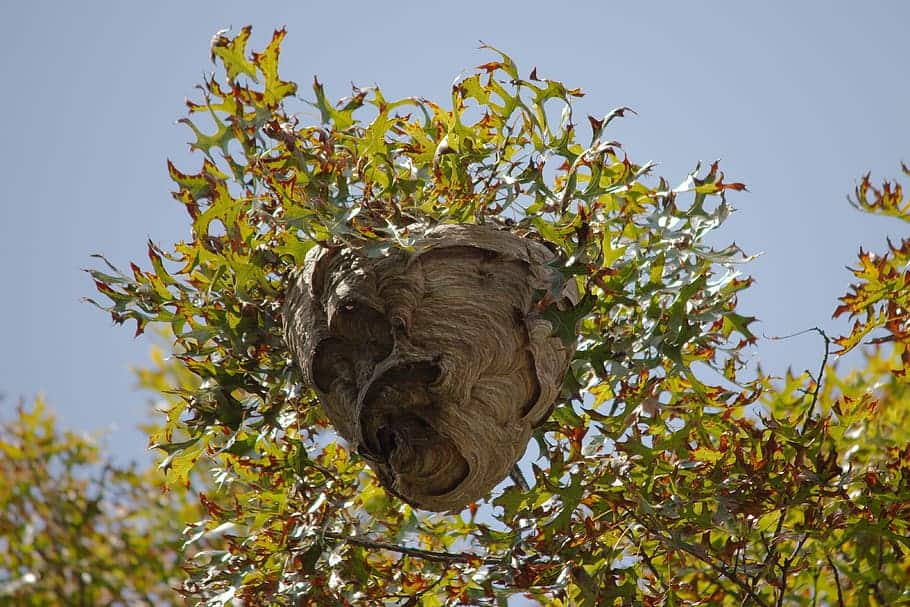
Do you know that yellow jackets are social insects? It means that they tend to live in a group of at least 4000. Try to imagine the size of any yellow jacket nest. Yeah, it is pretty big.
Therefore, yellow jackets prefer to build the nests on the ground or in the bushes, rarely in an abandoned habitat of animals. Another perfect location that attracts the yellow jackets is an attic, for example, under a cornice, and in sheds.
Usually, the yellow jacket nest is not a long-term structure. The insects tend to build it for one season. It all starts with the “foundress”, yellow jackets queen. During the summer, the size of the nest, as well as their quantity, grows. The most dangerous period is the end of the summer when there are many hungry young yellow jackets inside.
Typically, a yellow jacket nest in the ground or yellow jacket nest in a wall can be bigger than the basketball ring. In some areas, where the winter is not very cold, the yellow jackets may stay in their nests to overwinter. In such cases, the nest can be larger.
Yellow Jackets’ Lifecycle
As I have previously mentioned, yellow jackets are social insects that live in the colonies. There are three roles: workers, queens, and males (or drones). The lifespan of a wasp depends on many factors; however, their roles in the colonies have the greatest influence. As a rule, workers die the most quickly, but the lifecycle of the queen lasts longer.
Spring is the time when young queens begin to search for a nesting place and start its construction. To build a site for posterity, they use chewed grass and tree bark. When summer comes, the first offspring of working insects appear.
They resemble the uterus but are smaller in size. Such a brood can live up to two months. Closer to mid-September, individuals appear in special cells, the reproduction of which can produce young wasps. When it gets colder, and winter comes, the males begin to leave the nests and die.
In general, they can live up to 3 months. Wintering of queens takes place under the bark of trees, in crevices, and grassy remnants. Thus, the lifespan of a wasp can be delayed up to 4 years. In general, the wasp period of life is associated with heat, since only individual members of the family are able to winter in frosts.
Yellow Jackets vs Honey Bees
Frankly speaking, yellowjackets have more differences with honey bees than similarities. First of all, let’s talk about appearance. Look at the picture below.
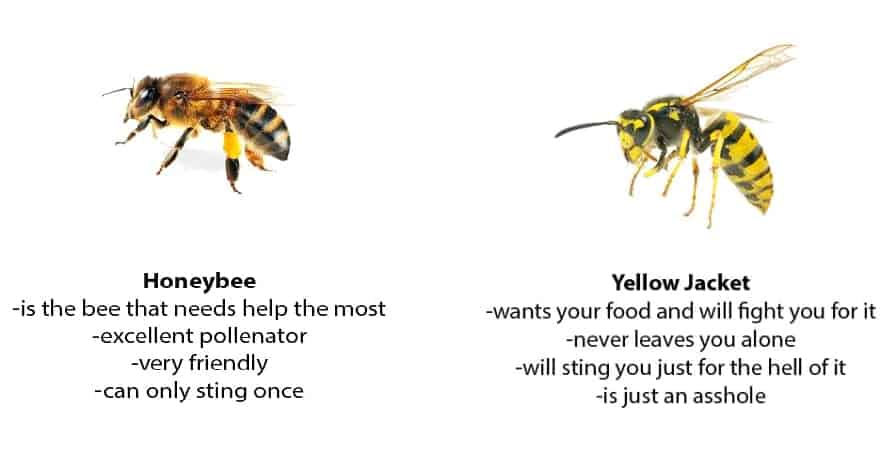
Things to notice:
- Yellowjackets have a longer body;
- The body of the wasps is smooth, without villi;
- The color of the wasp is similar to a bee – the same stripes, but brighter and more noticeable.
As for the lifecycle, the honey bees are working every day to construct the nest and find the food. By collecting nectar from flowers, bees produce many healthy products, such as honey. Wasps cannot create any useful product; they make their hives from a variety of waste. The nutrition of wasps is quite diverse. They prefer either fruits or nectar.
In case of danger, the bees sting, but only if they are attacked first. In this way, they protect the hive. After the bee stings, it dies, leaving a sting in the body. Wasps are more aggressive. They can sting at any time, and do not die.
What Attracts Yellow Jackets?
Yellowjackets like sweet odors. Therefore, they can be attracted by juice, soda, or just perfumes. Moreover, unlike honey bees, warps like the gardens much more than flowers. It is because gardening pests are one of the most delicious delicacies for them.
What’s more, these insects also use various wastes for food and nest construction. Therefore, if you have a bin in the yard, make sure that it is tightly closed, especially if something sweet is there.
Yellow Jackets Dangers
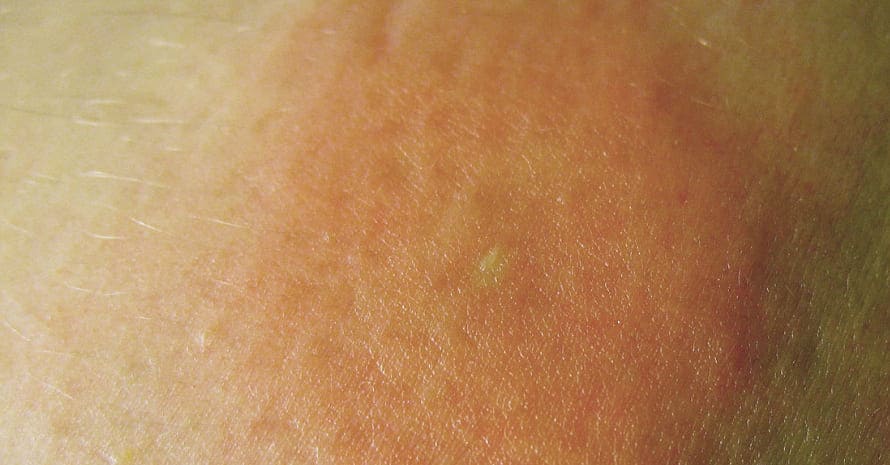
Yellowjackets are used to eat and spoil a lot of berries and fruits in the gardens, and when they get to bee apiaries, they destroy their inhabitants. The sting of wasps has no notches and, therefore, does not remain in the body of the victim.
Thus, unlike bees, wasps do not die and can sting many times. Other yellow jackets that are nearby can also smell the poison and join the attack.
Even if a person tolerates hornet bites relatively easily, an inflammatory reaction develops in the area of the bite, in any case. It can be a cause of swelling and an increase in skin temperature in the wound area.
Such insignificant, at first glance, manifestations can become fatal for people prone to allergies. Modern yellow jacket control repellents help prevent this outcome and save people from unpleasant encounters with wasps.
How to Get Rid of Yellow Jackets?
There are a lot of ways to get rid of yellowjackets, including the traditional ones. However, modern control remedies can help you eliminate yellow jackets much faster and with fewer damages. Below, I place a step-by-step guide. Read it attentively.
Step 1: Eliminate the food source.
The first step is to identify the food source. Remember, it can be rubbish or anything that has a sweet smell. My recommendation is to look at the trees in your garden first. If you noticed yellow jackets flying near them, it is one of their main food sources.
Step 2: Get rid of yellow jackets.
Getting rid of yellowjackets is not so hard as getting rid of their nests. For this, I advise you to browse modern remedies. Note that their toxicity is a big misconception.
Today, on store shelves, you can find many non-toxic products that are harmful to insects, but utterly harmless to you, plants, and pets. Among them are dust, sprays, liquids, and so on.
- Dust
Dust can prevent the future appearance of yellow jackets. All you need is to apply the remedy on the plants and ground. In the vast majority of cases, it has a look of white powder that can be easily blown by the wind.
- Sprays
Unlike dust, sprays have a gaseous structure. You should apply it only in a special suit. What’s good is that sprays have a longer effect compared to dust.
- Liquid
Liquids should be only applied in special clothes as sprays. They have long-term effects and prevent the future appearance of insects. But you should clean the space where you used the product after the yellow jackets disappear.
Step 3: Get rid of yellow jacket nest
To perform this step, I strongly recommend you to purchase special protective clothes. Also, if you have an allergy, then call the professional eliminator. Do not try to do it yourself! Yellowjackets are aggressive insects, especially when someone attacks their nests. To destroy the nest, please, follow these steps:
- Wear special dress;
- During the night, go to the nest;
- Apply the spray directly to it;
- Wait a couple of seconds;
- Return to your home. You may have to do it for a couple of nights.
Best Yellow Jackets Control Remedies
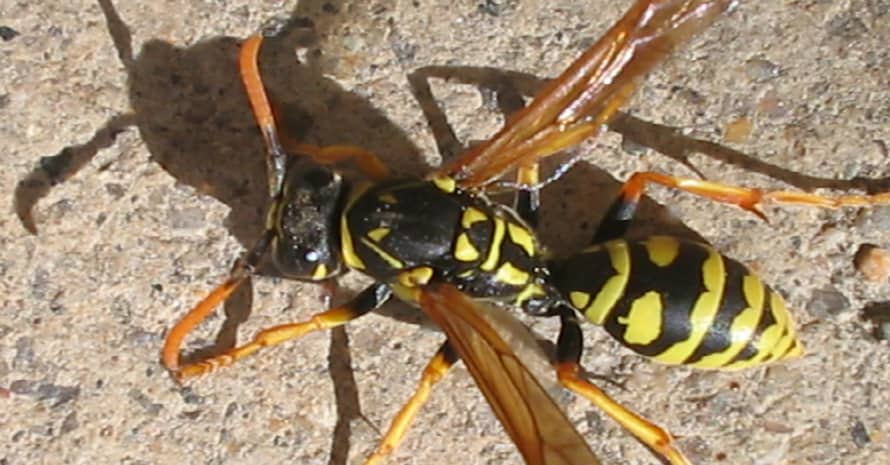
In this section, let’s talk about three of the best yellow jackets control remedies. All of them are completely safe and harmless for people, pets, and your garden.
1. Drione Pest Insecticide Dust — the Best Yellow Jacket Killer Dust
[amazon box=”B003PO2C9A” template=”vertical” tracking_id=”how-to-get-rid-of-yellow-jackets-20″ button_text=”Check price on Amazon” button_detail=”https://shareasale.com/r.cfm?b=410159&u=2583381&m=43235&urllink=www%2Edomyown%2Ecom%2Fdrione%2Ddust%2Dp%2D167%2Ehtml&afftrack=how%20to%20get%20rid%20of%20yellow%20jackets” button_detail_text=”Check price on DoMyOwn”]
Specifications:
- Active Ingredients: Piperonyl Butoxide 10%, Pyrethrins 1%, Silica gel 40%
- Item Form: Dust
- Item Weight: 1.58 pounds
- Package Dimensions LxWxH: 13.03 x 7.8 x 5.83 inches
- Target Species: Ants, Bees, Bedbugs, Boxelder Bugs, Cadelles, Centipedes, Cheese Mites, Cigarette Beetles, Cockroaches, Spiders, Drywood Termites, Fleas, Beetles, Lice, Pillbugs, Scorpions, Tticks, Wasps, and others
Bayer, the manufacturer of this anti-yellow jacket remedy, is one of the most well-known brands on the chemical and pharmaceutical market. It was established in 1863. Today, Bayer Concern represents over 350 companies in almost all countries of the world. The number of employees is more than 100 thousand specialists.
The dust is perfect for killing not only the yellow jackets but also other insect types. The remedy targets the following insects: bees, bedbugs, boxelder bugs, cadelles, centipedes, cheese mites, cigarette beetles, cockroaches, spiders, and others.
It is essential to apply the dust with the specialized bellow hand duster (it comes with the remedy). This Drione pest insecticide dust contains three main ingredients in the nest proportions:
- Pyrethrins: 1.0%;
- Piper only Butoxide: 10.0%;
- Amorphous Silica Gel: 40.0%.
| Pros: | Cons: |
|
|
2. BASF Wasp and Hornet Insecticide — the Best Yellow Jacket Killer Spray
[amazon box=”B0001LE2D4″ template=”vertical” tracking_id=”how-to-get-rid-of-yellow-jackets-20″ button_text=”Check price on Amazon” button_detail=”https://shareasale.com/r.cfm?b=410159&u=2583381&m=43235&urllink=www%2Edomyown%2Ecom%2Fpt%2Dwasp%2Dfreeze%2Dii%2Daerosol%2D175%2Doz%2Dp%2D60%2Ehtml&afftrack=how%20to%20get%20rid%20of%20yellow%20jackets” button_detail_text=”Check price on DoMyOwn”]
Specifications:
- Active Ingredient: Prallethrin 0.1%
- Item Form: Aerosol
- Item Weight: 1.09 Pounds
- Item Dimensions LxWxH: 2.63 x 2.63 x 11 inches
- Target Species: Wasps, Hornets, Yellow Jackets, Spiders
This BASF anti-yellow jacket spray is the solution to how to kill yellow jackets in the ground. It is not a secret that sprays are more comfortable in applying compared to dust or liquid remedies. Moreover, they are super-effective. BASF is the world’s largest chemical concern, headquartered in Germany.
Friedrich Engelhorn founded the first factory on April 6, 1865. The company is known for its environmental activities and collaborations with many universities on global warming issues.
This spray was designed especially for killing yellow jackets and honey bees. Therefore, it can kill the insects on contact up to 15 feet away. An important note: you can use the spray only outdoors. I recommended this remedy to several of my friends, who were all satisfied with the results.
| Pros: | Cons: |
|
|
3. Natural Apiary Beekeeping Suit — the Best Protection Suit for Yellow Jacket Extermination
[amazon box=”B00UCC7IC4″ template=”vertical” tracking_id=”how-to-get-rid-of-yellow-jackets-20″ button_text=”Check price on Amazon”]
Specifications:
- Material: Polycotton
- Color: White
- Strong metal YKK Zippers
- Item Weight: 2.87 pounds
- Item Dimensions LxWxH: 72 x 44 x 72 inches
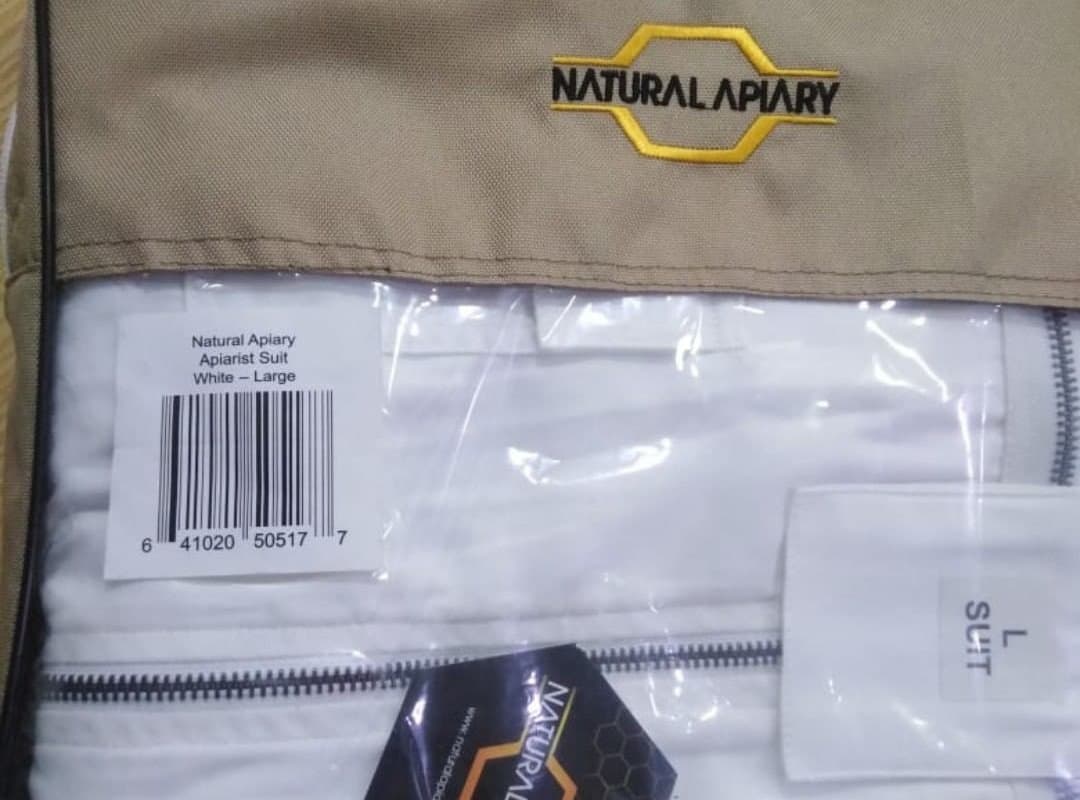
Remember, I emphasized how important it is to wear special clothes if you decided to kill yellow jackets on your own? Now, I want to share with you my favorite and super-protective suit for elimination. Natural Apiary is the company specialized in manufacturing special bees equipment. They use only high-quality materials and sell their goods at affordable prices.
This suit comes in several sizes: starting from XS, ending with XXXL, and in several colors. It is made of poly-cotton fiber that is well-known for its solid and durable use. How to get rid of yellow jackets in bushes? First of all, dress up in this suit!
| Pros: | Cons: |
|
|
How to Prevent Yellow Jackets in Future?
It is believed that it is impossible to prevent the appearance of wasp nests. Insects settle where they want. However, there are ways to reduce their numbers. I will talk about three such methods:
- Method of repelling: wormwood, lemon balm, basil, geranium, and other odorous plants can repel wasps. But the method has extremely low efficiency – in the best case, insects become smaller, but they do not completely disappear;
- Lure method: you can make a yellow jacket trap with your own hands from an ordinary plastic one and a half-liter bottle, but it is worth considering in advance that you will need a lot of such bottles. Pour the bait into the bottle: beer, fermented jam, stewed fruit, honey with water, in general, everything that is sweet and odorous. But ensure there is a distance between the liquid and the neck. For effect, you can add an insecticide or boric acid to the bait. Wasps attracted by refreshments will fall into the bottle, but they will not be able to get out of it;
- Disguise Method: use a fake slot in the form of a crumpled brown kraft paper bag. Since wasps are “territorial” insects, they will not build their dwelling in another colony’s possessions. Seeing a fake nest, they decide that the site belongs to other wasps and prefer to find another place to equip their home.
Related Post: How to Get Rid of Paper Wasps
FAQ: Short Answers to Summarize All the Above
In this section, I decided to put the short answers on the most popular questions about the yellow jackets.
What Do Yellow Jackets Eat?

Yellowjackets are almost omnivorous insects, which is one of their main differences from bees. However, the larvae feed exclusively on animal food, that is, other insects. Adults eat meat, fish, fruits, vegetables, insects, larvae, flower nectar, syrups, preserves, and so on.
Can You Get Rid of Yellow Jackets on Your Own?
It all depends on how many yellow jackets you have. Of course, you can first try to do it yourself by using the special pest remedies. Please, do not forget about your safety around yellow jackets, and dress up the protective clothes.
How Are Yellow Jackets Getting in My House?
Yellowjackets are very small; therefore, they can penetrate your house using various tiny holes, open doors, windows, etc.
How Much Does Yellow Jacket Extermination Cost?
The price range for yellow jacket nest removal varies from $100 to $1300. Overall, the most average price is about $375.
What First Aid Should Be Given in Case of Yellow Jacket Sting?
First of all, you need to disinfect the wound. I recommend you wash it with soap and water. After that, apply something cold to reduce the pain.

Final Thoughts
I hope the information in this article was useful for you. Now, you know how to get rid of yellow jackets in the home or yard, where they tend to build the nests, what attracts them, and how long these insects live. Also, we have taken a closer look at the two best anti wasps remedies and one suit. Have you ever faced a yellow jacket problem? How did you solve this issue? Write your answers in the comments below.
References:
- Bees and Wasps (Washington State Department of Health):
https://www.doh.wa.gov/CommunityandEnvironment/Pests/BeesandWasps - Yellowjackets (Ohio State University Extension):
https://ohioline.osu.edu/factsheet/HYG-2075-11 - Your Safety Around Yellow Jackets (National Park Service):
https://www.nps.gov/pore/planyourvisit/yoursafety_yellowjackets.htm

